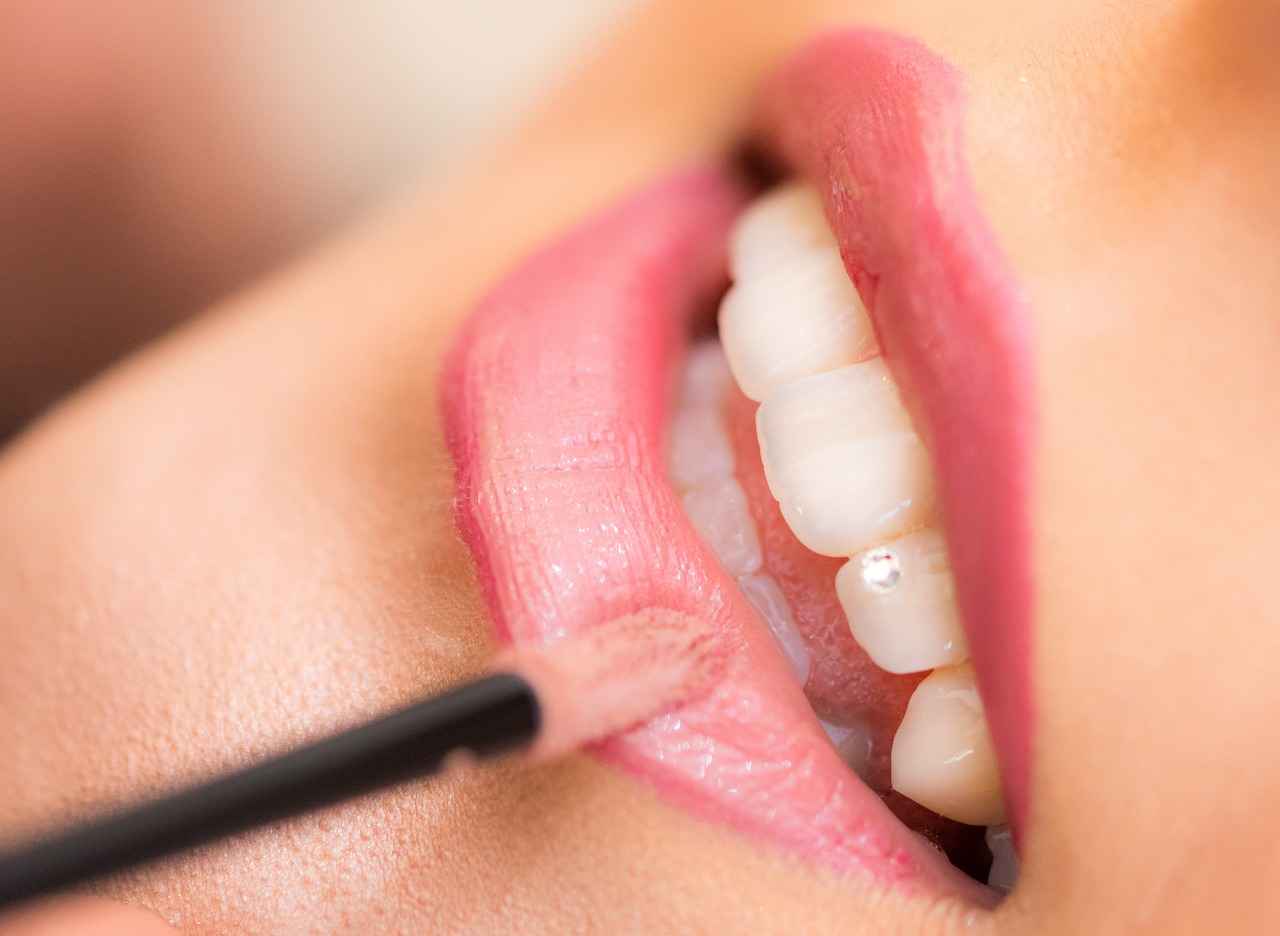This article delves into the intricate timeline and essential steps involved in obtaining a dental crown. It covers the preparation, placement, and recovery phases to offer a comprehensive understanding of the entire process.
What is a Dental Crown and Why is it Needed?
A dental crown is a protective cap placed over a damaged tooth. It serves to restore the tooth’s shape, size, and function. Crowns are crucial in maintaining oral health, as they can prevent further decay and provide structural support to weakened teeth.
How Long Does the Crown Procedure Typically Take?
The duration for getting a dental crown can vary significantly based on several factors. Typically, the procedure is completed in two visits, each lasting about an hour, depending on the complexity of the case.
First Appointment: Preparation and Impressions
During the initial visit, the dentist prepares the tooth and takes impressions. This crucial step determines the crown’s fit and appearance, usually taking about 60-90 minutes.
- Tooth Preparation Process: This involves reshaping the existing tooth structure to accommodate the crown. Local anesthesia may be administered to ensure patient comfort.
- Taking Impressions for the Crown: After preparation, impressions are taken using dental putty or digital scanning technology. These impressions are essential for creating a custom-fit crown that matches the surrounding teeth.
Second Appointment: Crown Placement
The second visit focuses on placing the crown, typically lasting about 30-60 minutes. During this appointment, the dentist checks the crown’s fit before permanently cementing it in place.
What Factors Affect the Duration of the Crown Procedure?
Several factors can influence how long the crown procedure takes, including the type of crown chosen, the complexity of the case, and the patient’s specific dental needs.
- Types of Crowns and Their Impact on Time: Different types of crowns—such as porcelain, metal, or resin—may require varying fabrication times. Understanding these differences helps patients make informed decisions.
- Patient-Specific Factors to Consider: Individual factors, such as the health of the tooth and any underlying conditions, can also affect the timeline. A thorough dental examination helps determine the best approach for each patient.
What is the Recovery Process Like After Crown Placement?
Recovery after crown placement is generally straightforward. Patients may experience mild discomfort, manageable with over-the-counter pain relievers, and should follow specific care instructions from their dentist.
- Post-Procedure Care Instructions: After the procedure, patients are advised to avoid hard foods and maintain good oral hygiene to ensure the longevity of the crown.
- When to Contact Your Dentist After the Procedure: If patients experience persistent pain or sensitivity post-placement, contacting the dentist promptly is essential. Early intervention can address potential issues before they escalate.
Understanding the timeline and steps involved in getting a dental crown can significantly alleviate patient anxiety. By being informed, patients can prepare adequately for their appointments and ensure a smoother experience overall.

What is a Dental Crown and Why is it Needed?
A dental crown serves as a protective cap that is placed over a damaged or weakened tooth. This restoration not only helps to restore the tooth’s shape, size, and function but also enhances its appearance. Understanding the purpose of dental crowns is crucial for patients, as it highlights the significance of this procedure in maintaining oral health.
Dental crowns are often recommended in various situations, including:
- Severe Tooth Decay: When a tooth has extensive decay that cannot be repaired with a filling, a crown can help restore its integrity.
- Cracked or Fractured Teeth: A crown can protect a tooth that has been cracked or fractured, preventing further damage.
- Root Canal Treatment: After a root canal, a crown is usually placed to protect the remaining tooth structure.
- Cosmetic Enhancement: Crowns can improve the aesthetic appearance of discolored or misshapen teeth.
- Support for Bridges: Crowns can be used to anchor dental bridges, providing stability to the restoration.
The process of getting a dental crown typically involves two visits to the dentist. During the first appointment, the dentist will prepare the tooth, which includes reshaping it to accommodate the crown. This step is essential to ensure a proper fit and may involve the use of local anesthesia to minimize discomfort.
After the tooth is prepared, the dentist will take impressions, either through traditional dental putty or advanced digital scanning technology. These impressions are critical as they help in crafting a custom-fit crown that matches the surrounding teeth in both shape and color.
Once the crown is fabricated, usually within a week, the patient returns for the second appointment. During this visit, the dentist will place the crown over the prepared tooth, ensuring that it fits comfortably and aligns with the bite. The crown is then permanently cemented in place, restoring the tooth’s function and appearance.
One of the key benefits of a dental crown is its ability to protect and prolong the life of a damaged tooth. By covering the tooth, a crown helps to prevent further decay and damage, which could lead to more invasive procedures or even tooth loss. Additionally, crowns can significantly enhance the aesthetics of a smile, providing a natural look that blends seamlessly with existing teeth.
Patients should also be aware of the different materials available for crowns, including porcelain, ceramic, metal, and resin. Each material has its own advantages and is suited for different situations. For instance, porcelain crowns are often preferred for front teeth due to their natural appearance, while metal crowns may be more suitable for back teeth due to their strength and durability.
In conclusion, understanding what a dental crown is and why it is needed is essential for patients. This knowledge not only helps in making informed decisions about dental care but also emphasizes the importance of maintaining oral health. By addressing issues promptly and seeking appropriate treatments like dental crowns, patients can ensure the longevity of their teeth and overall dental health.

How Long Does the Crown Procedure Typically Take?
When it comes to dental procedures, understanding the timeline for getting a crown is essential for patients. A dental crown is a crucial restorative solution that helps preserve the functionality and aesthetics of damaged teeth. This article delves into the typical duration of the crown procedure, breaking down each appointment and the factors that can influence the overall timeline.
The overall time for obtaining a dental crown can vary significantly based on several factors. Generally, the procedure is completed in two visits, each lasting approximately one hour. However, the complexity of the case may extend this timeline. Here’s a closer look at what to expect during each visit.
During the initial visit, the dentist focuses on preparing the tooth for the crown. This step typically takes about 60-90 minutes and involves several key actions:
- Tooth Preparation: The dentist reshapes the existing tooth to create enough space for the crown. This process may involve the use of local anesthesia to ensure patient comfort.
- Taking Impressions: After the tooth is prepared, impressions are taken using either dental putty or advanced digital scanning technology. Accurate impressions are vital for crafting a crown that fits perfectly and matches the surrounding teeth.
The second visit is dedicated to placing the crown. This appointment usually lasts about 30-60 minutes. During this time, the dentist will:
- Check the Fit: Before cementing the crown, the dentist ensures that it fits correctly and aligns well with the bite.
- Cementing the Crown: Once the fit is confirmed, the crown is permanently cemented in place, completing the procedure.
Several factors can influence how long the crown procedure takes:
There are various types of crowns, including porcelain, metal, and resin. Each type may have different fabrication times. For example, porcelain crowns often require more time to create, while metal crowns can sometimes be prepared more quickly. Understanding these differences can help patients make informed decisions about their treatment options.
Individual patient factors also play a significant role in the timeline. The health of the existing tooth, the presence of any underlying conditions, and the patient’s overall dental health can all affect how long the procedure takes. A thorough dental examination is crucial in determining the appropriate approach for each patient, ensuring that the process is as efficient as possible.
Recovery after crown placement is generally straightforward. Most patients experience only mild discomfort, which can be effectively managed with over-the-counter pain relievers. It’s important to follow specific care instructions provided by the dentist to ensure a smooth recovery.
After the procedure, patients should:
- Avoid Hard Foods: To protect the newly placed crown, it’s advisable to steer clear of hard or sticky foods for a few days.
- Maintain Good Oral Hygiene: Regular brushing and flossing are essential for the longevity of the crown and overall oral health.
If patients experience persistent pain or sensitivity after the crown is placed, it’s crucial to contact the dentist promptly. Early intervention can help address any potential issues before they become more serious.
First Appointment: Preparation and Impressions
When you visit the dentist for a dental crown, the first appointment is crucial in setting the foundation for a successful procedure. This visit typically lasts between 60 to 90 minutes and involves two primary steps: tooth preparation and taking impressions. Understanding these steps can help alleviate any anxiety you may have and prepare you for what to expect.
During the tooth preparation phase, the dentist will carefully reshape your existing tooth structure. This is essential to ensure that the crown fits snugly and comfortably. Local anesthesia is often administered to minimize discomfort, allowing you to feel at ease throughout the procedure. The dentist removes any decay and reshapes the tooth to create a strong base for the crown. This meticulous process is vital for the longevity and functionality of the crown.
Once the tooth is prepared, the next step involves taking impressions. This can be done using traditional dental putty or advanced dental scanning technology. The impressions capture the precise shape and contours of your tooth and surrounding teeth, ensuring that the crown is custom-made for you. This step is not only important for aesthetics, but it also ensures that your bite will be comfortable and functional.
- Traditional Impressions: Dental putty is placed over the tooth, and you will be asked to bite down gently to create a mold.
- Digital Impressions: A small camera captures images of your teeth, creating a 3D model that can be used for crown fabrication.
The impressions taken during this appointment are sent to a dental laboratory where your crown will be fabricated. Depending on the type of crown you choose—porcelain, ceramic, or metal—the time it takes to create the crown can vary. Typically, the lab will require about 1 to 2 weeks to produce your custom crown.
The accuracy of the impressions is critical for several reasons:
- Fit: A well-fitting crown will feel comfortable and function properly, allowing you to chew with ease.
- Aesthetics: The crown should match the color and shape of your natural teeth to ensure a seamless appearance.
- Longevity: Properly fitted crowns are less likely to become loose or require adjustments in the future.
In summary, the first appointment for a dental crown involves significant preparation and attention to detail. By understanding the steps involved, you can approach your visit with confidence and clarity. Remember, this appointment is the first step toward restoring your smile and ensuring your dental health.
Tooth Preparation Process
Tooth preparation is a critical step in the process of getting a dental crown. It involves reshaping the existing tooth structure to ensure a proper fit for the crown. This procedure is essential for achieving both aesthetic and functional results, allowing the crown to blend seamlessly with the surrounding teeth.
During the tooth preparation process, the dentist will typically begin by administering local anesthesia. This is done to ensure the patient remains comfortable and pain-free throughout the procedure. The amount of anesthesia used may vary based on the individual’s sensitivity and the complexity of the case.
The dentist will then use specialized instruments to carefully remove a portion of the tooth enamel. This reshaping is vital for several reasons:
- Accommodating the Crown: The crown must fit snugly over the prepared tooth, and reshaping allows for this.
- Maintaining Functionality: Proper preparation ensures that the bite remains balanced and functional.
- Enhancing Aesthetics: The shape of the tooth can significantly impact the appearance of the crown, making it essential for a natural look.
After the tooth has been adequately prepared, the dentist will take impressions of the tooth. These impressions can be made using traditional dental putty or advanced digital scanning technology. The choice of method may depend on the dentist’s preference and the available technology in the practice. The impressions are crucial for creating a custom-fit crown that matches the contours of the surrounding teeth.
Once the impressions are taken, a temporary crown may be placed over the prepared tooth. This temporary crown serves to protect the tooth and maintain its function while the permanent crown is being fabricated. Patients are advised to be cautious with the temporary crown, avoiding hard foods and sticky substances that could dislodge it.
The entire tooth preparation process can take approximately 60 to 90 minutes, depending on the complexity of the case and the number of teeth being treated. Following this appointment, the patient will usually return for a second visit, where the permanent crown will be placed. This visit typically lasts about 30 to 60 minutes, during which the dentist ensures the crown fits correctly before cementing it in place.
In summary, tooth preparation is a vital component of the dental crown procedure. It involves careful reshaping of the tooth structure, the use of local anesthesia for comfort, and the creation of impressions for a custom crown. Understanding this process helps patients appreciate the meticulous care that goes into restoring their dental health.
Taking Impressions for the Crown
Taking impressions for a dental crown is a pivotal step in the overall process of restoring a damaged tooth. This procedure ensures that the crown fits perfectly, mimicking the shape and function of the natural tooth. There are two primary methods for obtaining these impressions: dental putty and digital scanning technology. Each method has its own advantages and nuances that can affect the comfort and experience of the patient.
The accuracy of the impressions is crucial as it directly influences the final outcome of the crown. A well-fitted crown not only enhances the aesthetic appearance but also contributes to the overall health of the dental structure. Poor impressions can lead to ill-fitting crowns, which may cause discomfort, affect chewing, and necessitate additional dental work.
The traditional method involves using dental putty, a soft, malleable material that is placed over the prepared tooth. Once the putty sets, it captures the exact contours of the tooth and surrounding gum line. This method typically involves the following steps:
- Preparation: The dentist prepares the tooth by cleaning it and applying a local anesthetic if necessary.
- Application: Dental putty is mixed and placed over the tooth.
- Setting: The putty is allowed to set for a few minutes, during which it hardens and takes an impression of the tooth.
- Removal: After setting, the dentist carefully removes the putty to reveal the impression.
This method is reliable but can be uncomfortable for some patients due to the material’s texture and the time it takes to set.
In recent years, digital scanning technology has emerged as a modern alternative to traditional impressions. This method utilizes a small handheld device to capture a 3D image of the tooth and surrounding area. The benefits of digital scanning include:
- Comfort: Patients often find digital scanning more comfortable, as it eliminates the need for messy putty.
- Speed: The scanning process is quick, typically taking only a few minutes.
- Accuracy: Digital scans provide highly detailed images, allowing for precise measurements that can enhance the fit of the crown.
- Immediate Results: The digital impression can be sent directly to the dental lab, expediting the crown fabrication process.
Regardless of the method used, patients can expect a few common elements during the impression process:
- Comfort Measures: Dentists often use local anesthesia to minimize discomfort during tooth preparation.
- Duration: The entire impression process typically takes between 30 to 60 minutes, depending on the method and the complexity of the case.
- Follow-Up: After impressions are taken, patients may have a temporary crown placed while waiting for the permanent crown to be fabricated.
In conclusion, whether through traditional dental putty or advanced digital scanning, taking accurate impressions is a critical step in the crown placement process. This ensures that the final restoration not only fits well but also functions effectively, enhancing both the patient’s comfort and oral health.
Second Appointment: Crown Placement
The second appointment for dental crown placement is a crucial step in the overall process of restoring a damaged tooth. This visit typically lasts between 30 to 60 minutes, depending on various factors such as the complexity of the case and the type of crown being used. During this appointment, the dentist focuses on ensuring that the crown fits perfectly before it is permanently cemented in place.
Upon arrival, the dentist will first check the fit of the crown, which was custom-made based on the impressions taken during the initial visit. This step is essential to ensure that the crown aligns well with the adjacent teeth and does not interfere with the patient’s bite. If any adjustments are necessary, the dentist will make them at this stage to ensure optimal comfort and functionality.
- Initial Fit Check: The dentist will place the crown on the prepared tooth and assess its alignment and fit.
- Adjustments: If the crown is too tight or loose, minor adjustments will be made using specialized dental tools.
- Final Cementation: Once the fit is confirmed, the dentist will prepare to cement the crown in place.
Before cementation, the dentist may apply a dental adhesive or bonding agent to ensure a secure fit. This is a critical step, as a well-cemented crown will enhance the longevity of the restoration. The dentist will then carefully position the crown over the tooth and apply pressure to ensure it adheres correctly.
After the crown is positioned, the dentist will check the bite once more to ensure that everything is aligned correctly. This step is vital, as any misalignment can lead to discomfort or issues with chewing. If necessary, further adjustments can be made at this time.
Once everything is confirmed to be in place, the dentist will cure the cement using a special light, which helps it harden quickly. This process typically takes just a few minutes. After the cement has set, the dentist will provide post-procedure care instructions, which may include recommendations on what to eat and how to care for the new crown.
It’s important for patients to follow these instructions closely to ensure the longevity of their crown. Patients are usually advised to avoid hard or sticky foods for a short period after the procedure, as this can help prevent any damage to the newly placed crown. Additionally, maintaining good oral hygiene is essential to ensure the health of both the crown and the surrounding teeth.
In summary, the second appointment for crown placement is a straightforward yet critical step in the dental restoration process. By focusing on the fit, adjustments, and proper cementation of the crown, dentists can help ensure that patients leave the office with a comfortable and functional restoration that enhances their smile.

What Factors Affect the Duration of the Crown Procedure?
The duration of a dental crown procedure can vary widely based on several influencing factors. Understanding these elements can help patients prepare for their dental visits and set realistic expectations. Below, we explore the key factors that affect how long the crown procedure takes.
The material used for the crown significantly impacts the overall timeline. Common types of crowns include:
- Porcelain Crowns: These are often favored for their natural appearance but may take longer to fabricate due to the intricate design process.
- Metal Crowns: Generally quicker to produce, metal crowns are durable and may require less time for the dentist to place.
- Resin Crowns: These can be made quickly but may not be as durable as other options.
Patients should discuss with their dentist the pros and cons of each type to determine which best suits their needs and timeline.
The complexity of the dental issue being addressed can also extend the duration of the procedure. Factors such as:
- The extent of tooth damage or decay
- The need for additional procedures, like root canals
- Any pre-existing dental conditions
These factors may require more time for tooth preparation and treatment planning, ultimately affecting the overall timeline.
Every patient is unique, and individual dental needs can influence the duration of the crown procedure. Considerations include:
- Oral Health Status: Patients with underlying health issues may require special accommodations, which can extend the process.
- Anxiety Levels: Patients who experience dental anxiety may need extra time for calming techniques or sedation options.
- Previous Dental Work: Prior dental treatments can complicate new procedures, necessitating a longer appointment.
During the initial consultation, dentists will evaluate these factors to provide a tailored timeline.
After the initial tooth preparation and impressions, the crown must be fabricated, which typically takes about 1-2 weeks. However, some dental offices have in-house labs that can create crowns on the same day, significantly reducing the overall timeline. Patients should inquire about this option if they are looking for a quicker solution.
Advancements in dental technology have also streamlined the crown procedure. For example:
- Digital Impressions: Using digital scanning instead of traditional molds can save time and improve accuracy.
- CAD/CAM Technology: This allows for same-day crown fabrication, reducing the need for multiple appointments.
Patients should consult their dentist about the technology available at their practice, as it can significantly affect the duration of the procedure.
In summary, understanding the factors that influence the duration of the crown procedure can help patients feel more prepared for their dental visits. By discussing these elements with their dentist, patients can ensure a smoother and more efficient experience.
Types of Crowns and Their Impact on Time
When it comes to dental crowns, understanding the different types and their specific fabrication times is crucial for patients. Each type of crown—be it porcelain, metal, or resin—offers unique benefits and challenges, which can significantly affect the overall timeline of the crown procedure.
- Porcelain Crowns: Known for their natural appearance, porcelain crowns are often used for front teeth. They typically require longer fabrication times due to their intricate design and the need for precise color matching.
- Metal Crowns: Made from alloys, metal crowns are incredibly durable and can withstand significant chewing forces. Their fabrication time is generally shorter than that of porcelain crowns, making them a popular choice for back teeth.
- Resin Crowns: These crowns are less expensive and easier to fabricate but may not last as long as porcelain or metal crowns. They are often used as a temporary solution while a more permanent crown is being made.
The fabrication time for each crown type can differ based on several factors:
- Porcelain Crowns: These crowns can take anywhere from two to three weeks to fabricate. The process involves multiple steps, including designing, shaping, and firing the porcelain to achieve the desired strength and aesthetics.
- Metal Crowns: Typically, metal crowns can be completed in one to two weeks, as the materials used are easier to mold and require less intricate detailing compared to porcelain.
- Resin Crowns: The fabrication time for resin crowns is often the shortest, usually completed in just a few days. However, due to their less durable nature, they are often recommended as a temporary solution.
Patients who are aware of the differences in crown types can make informed decisions about their treatment options. For example, if a patient is looking for a quick solution, opting for a resin crown may be ideal. Conversely, if aesthetics and durability are priorities, investing in a porcelain crown might be worth the wait.
In addition to the type of crown selected, other factors can impact the overall timeline:
- Laboratory Workload: The dental laboratory’s current workload can affect how quickly crowns are fabricated. During busy periods, patients may experience longer wait times.
- Complexity of the Case: If a patient has a particularly challenging dental situation, such as extensive damage or misalignment, this may require additional time for custom fabrication.
- Patient-Specific Needs: Individual dental health and preferences can also influence the timeline. A thorough consultation with a dentist can help clarify what to expect.
In conclusion, understanding the different types of crowns and their respective fabrication times is essential for patients considering dental crowns. By being informed, patients can better navigate their treatment options and timelines, ensuring a smoother dental experience.
Patient-Specific Factors to Consider
When considering the timeline for dental crown procedures, it is essential to understand that individual factors play a significant role. These factors can include the overall health of the tooth in question as well as any underlying medical conditions that may affect the dental process. A thorough dental examination is crucial in determining the most suitable approach for each patient.
During the initial consultation, the dentist will evaluate the condition of the tooth requiring the crown. If the tooth is severely damaged or has extensive decay, additional treatments, such as root canal therapy, may be necessary before proceeding with the crown placement. This can extend the overall timeline, as these procedures require healing time before the crown can be placed.
Moreover, underlying health issues such as diabetes or heart conditions can influence healing and recovery. Patients with compromised immune systems may experience longer recovery times, which can affect the timeline for completing the crown procedure. Therefore, it is vital for the dentist to have a complete medical history to tailor the treatment plan effectively.
Another important aspect to consider is the patient’s oral hygiene. Poor oral hygiene can lead to complications, such as infections, which may delay the procedure. Patients are encouraged to maintain optimal oral care before and after getting a crown to ensure a smooth process. This includes regular brushing, flossing, and routine dental check-ups.
Additionally, the type of crown selected can also impact the timeline. For instance, porcelain crowns may take longer to fabricate compared to metal crowns due to the intricate process involved. Understanding the differences in material can help patients make informed decisions that align with their treatment timeline and aesthetic preferences.
In summary, a comprehensive dental examination is essential for determining the most appropriate treatment plan for each patient. By considering individual factors such as tooth health, underlying conditions, and personal oral hygiene, dentists can better estimate the timeline for crown placement. This personalized approach not only enhances the likelihood of a successful outcome but also helps manage patient expectations regarding the duration of the procedure.
| Factor | Impact on Timeline |
|---|---|
| Tooth Health | May require additional treatments, extending timeline |
| Underlying Conditions | Can affect healing and recovery time |
| Oral Hygiene | Poor hygiene may lead to complications, delaying the process |
| Type of Crown | Different materials have varying fabrication times |

What is the Recovery Process Like After Crown Placement?
When it comes to dental procedures, understanding the recovery process is crucial for ensuring a smooth transition back to normalcy. Crown placement is a common procedure that many patients undergo to restore damaged teeth. This article aims to provide a detailed overview of what to expect during the recovery phase after crown placement.
The recovery process after crown placement is generally straightforward and manageable for most patients. After the procedure, it is common to experience some level of discomfort. This discomfort is typically mild and can be effectively managed with over-the-counter pain relievers such as ibuprofen or acetaminophen. It is essential to follow your dentist’s specific care instructions to ensure a smooth recovery.
- Mild Discomfort: Patients may feel sensitivity or discomfort in the treated area, especially when consuming hot or cold foods.
- Swelling: Some swelling around the gums is normal and usually subsides within a few days.
- Temporary Sensitivity: Sensitivity to temperature changes may occur but typically resolves within a few weeks.
To facilitate a smooth recovery, patients should adhere to the following care instructions:
- Avoid Hard Foods: For the first few days, it is advisable to stick to soft foods to prevent any pressure on the new crown.
- Maintain Oral Hygiene: Continue brushing and flossing, but be gentle around the crown area to avoid irritation.
- Follow-Up Appointments: Attend any scheduled follow-ups with your dentist to ensure the crown is fitting well and to address any concerns.
While mild discomfort is expected, there are specific signs that warrant a call to your dentist:
- Persistent Pain: If pain persists beyond a few days or worsens, it may indicate an issue with the crown or underlying tooth.
- Increased Sensitivity: If sensitivity to temperature does not improve over time, it’s essential to consult your dentist.
- Visible Issues: Any visible cracks or shifts in the crown should be addressed immediately.
To ensure the longevity of your crown, consider the following long-term care tips:
- Regular Dental Checkups: Regular visits to your dentist help monitor the condition of your crown and overall oral health.
- Avoid Grinding Teeth: If you grind your teeth, discuss protective options like a night guard with your dentist.
- Limit Staining Foods: Reduce consumption of foods and beverages that can stain crowns, such as coffee and red wine.
In summary, the recovery process after crown placement is generally uncomplicated. By managing discomfort with over-the-counter medications, following care instructions, and being aware of potential complications, patients can ensure a successful recovery. Always remember that open communication with your dentist is vital for addressing any concerns that may arise during the recovery phase.
Post-Procedure Care Instructions
After undergoing a dental crown procedure, patients often wonder about the best ways to care for their new restoration. Proper post-procedure care is crucial for ensuring the longevity and functionality of the crown. Here are some essential guidelines and tips to follow:
Post-procedure care is vital for maintaining the health of both the crown and the surrounding teeth. Following the dentist’s instructions can help prevent complications such as discomfort, crown damage, or even infection. Good oral hygiene practices contribute to the overall success of the dental restoration.
- Avoid Hard Foods: It is advisable to steer clear of hard or crunchy foods for at least the first few days after the procedure. Foods like nuts, hard candies, and ice can put undue stress on the crown and may lead to cracking or dislodging.
- Limit Sticky Foods: Sticky foods such as caramel or taffy can pull on the crown, potentially loosening it from the tooth. It’s best to avoid these types of foods until you receive clearance from your dentist.
- Refrain from Using Teeth as Tools: Some individuals have a habit of using their teeth to open packages or bottles. This should be avoided, as it can damage the crown or the underlying tooth structure.
Maintaining excellent oral hygiene is essential for the longevity of your crown. Here are some practical tips:
- Brush Regularly: Brush your teeth at least twice a day with a soft-bristled toothbrush. Pay special attention to the area around the crown to remove plaque and food particles.
- Floss Daily: Flossing is crucial for preventing gum disease and ensuring that food does not get trapped around the crown. Use waxed dental floss to avoid snagging on the crown.
- Use Antimicrobial Mouthwash: Rinsing with an antimicrobial mouthwash can help reduce bacteria in the mouth, promoting better gum health and overall hygiene.
If you experience any unusual symptoms after the crown placement, it is essential to reach out to your dentist. Here are some signs that warrant a call:
- Persistent Pain: Mild discomfort is normal after the procedure; however, if the pain persists or worsens, it may indicate an issue with the crown or the underlying tooth.
- Increased Sensitivity: While some sensitivity to hot or cold is expected, significant or prolonged sensitivity could suggest a problem that needs attention.
- Visible Damage: If you notice any chips, cracks, or looseness in the crown, contact your dentist immediately for evaluation and potential repair.
By following these post-procedure care instructions, patients can enhance the durability of their dental crowns and maintain optimal oral health. Remember, your dentist is your best resource for personalized advice and support as you adjust to your new crown.
When to Contact Your Dentist After the Procedure
After undergoing a dental crown procedure, it is crucial for patients to understand the signs that may indicate a need for further consultation with their dentist. While many patients experience a smooth recovery, some may encounter issues that require attention. This section focuses on and emphasizes the importance of timely communication.
It is not uncommon for patients to experience some discomfort or sensitivity after a dental crown is placed. This can be due to several factors, including the adjustment period of the new crown or the underlying tooth’s condition. However, if sensitivity persists beyond a few days or intensifies, it is essential to reach out to your dentist.
- Persistent Pain: If you experience ongoing pain that does not subside with over-the-counter pain relievers, it may indicate an issue such as an improper fit or an underlying dental problem.
- Increased Sensitivity: Sensitivity to hot or cold that worsens over time should not be ignored. This could suggest that the crown is not fitting correctly or that the nerve of the tooth is affected.
- Visible Issues: If you notice any visible cracks, chips, or discoloration in the crown, it is vital to consult your dentist to assess the integrity of the restoration.
- Gum Problems: Swelling, redness, or bleeding around the crown can be signs of infection or gum disease, necessitating immediate attention.
Contacting your dentist at the first sign of trouble can significantly impact the outcome of your treatment. Early intervention allows for the identification and resolution of any potential issues before they escalate into more serious complications. For instance, if a crown is improperly fitted, it may lead to further decay or damage to the underlying tooth.
When you reach out to your dentist regarding post-crown concerns, they will likely ask specific questions about your symptoms and may request that you come in for an evaluation. During this appointment, the dentist will:
- Perform a thorough examination of the crown and the surrounding tooth structure.
- Take X-rays if necessary to assess the underlying tooth’s health.
- Discuss possible solutions, which may include adjustments to the crown, treatment for any underlying issues, or even replacement if needed.
While waiting for your dental appointment, there are several steps you can take to manage discomfort:
- Use over-the-counter pain relievers as directed to alleviate mild pain.
- Avoid hard, sticky, or chewy foods that may aggravate the crown.
- Maintain good oral hygiene by gently brushing and flossing around the crown to keep the area clean.
In summary, understanding when to contact your dentist after a crown procedure is essential for ensuring the longevity of your dental restoration. By being aware of the signs that indicate potential issues and seeking timely help, you can protect your oral health and enjoy the benefits of your new crown.
Frequently Asked Questions
- How long does the entire crown procedure take?
The entire procedure typically takes two visits, with each visit lasting about an hour. The first appointment focuses on tooth preparation and impressions, while the second is for placing the crown.
- Is the crown procedure painful?
Most patients experience minimal discomfort during the crown procedure. Local anesthesia is often used to ensure comfort during tooth preparation. After the procedure, mild soreness can usually be managed with over-the-counter pain relievers.
- What should I avoid after getting a crown?
After getting a crown, it’s best to avoid hard or sticky foods for a few days. Maintaining good oral hygiene is crucial to ensure the longevity of your crown, so be sure to follow your dentist’s care instructions.
- When should I contact my dentist after the procedure?
If you experience persistent pain or sensitivity after your crown placement, it’s important to reach out to your dentist. Early intervention can help address any potential issues before they worsen.
- What factors can affect the duration of the crown procedure?
Several factors can influence the timeline, including the type of crown selected, the complexity of your dental case, and any individual health considerations. A thorough dental examination will help determine the best approach for you.




